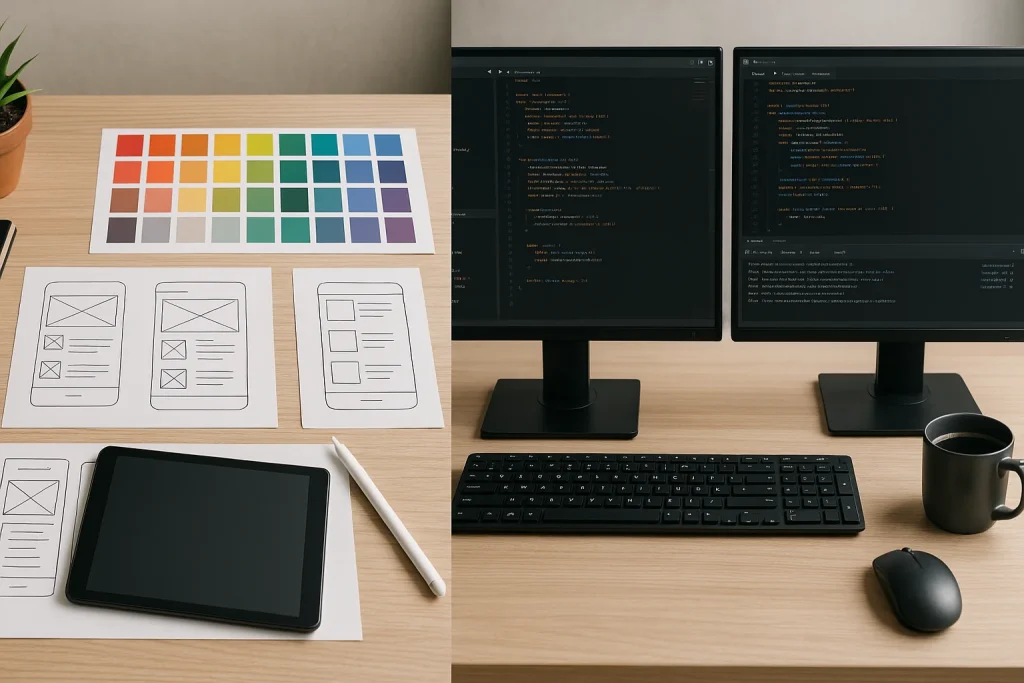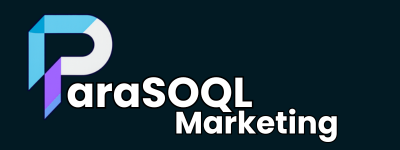Web Design vs. Web Development: What’s the Real Difference?
When it comes to building websites, two distinct yet closely intertwined disciplines take the spotlight: web design vs. web development. These roles often get blurred, especially for those outside the tech space, leading to confusion about what each actually entails. If you’re looking to build or revamp a website, understanding the real difference between the two can help you make better decisions and communicate more effectively with your creative and technical teams.
Let’s break down the differences—and where these roles intersect.

What is Web Design?
Web design is all about visual aesthetics and user experience. A web designer’s primary goal is to make sure the site is visually appealing, easy to navigate, and aligned with the brand’s identity. Think of them as architects who draw up the plans and mood boards for the project.
Key Responsibilities:
Creating layouts and mockups using design tools like Figma, Adobe XD, or Sketch.
Choosing color schemes, fonts, and imagery that reflect the brand’s voice.
Designing for usability and accessibility, ensuring that the user experience (UX) is seamless.
Wireframing and prototyping pages before they go into development.
Tools Web Designers Use:
Figma
Adobe XD
Photoshop/Illustrator
InVision
Canva (for lighter tasks)
Skills That Matter:
Visual design principles
UX/UI fundamentals
Typography
Branding
Responsive design
What is Web Development?
Web development, on the other hand, is the technical implementation of the web designer’s vision. Developers take the mockups and transform them into fully functioning websites, handling everything from page functionality to server-side integrations.
Key Responsibilities:
Writing the code to bring the design to life (HTML, CSS, JavaScript, etc.).
Building interactive features like forms, sliders, or animations.
Developing backend systems to manage data, users, or authentication (often using PHP, Python, Node.js, or similar technologies).
Ensuring cross-browser compatibility and website performance.
Maintaining and updating the site over time.
Tools Web Developers Use:
Visual Studio Code
Git/GitHub
Browser DevTools
Frameworks like React, Vue, Angular
CMS platforms like WordPress or Webflow (also used by some designers)
Skills That Matter:
Proficiency in front-end languages (HTML, CSS, JS)
Understanding of back-end logic (APIs, databases)
Debugging and testing
Version control
Performance optimization
Front-End vs. Back-End Development
It’s worth noting that web development itself is split into front-end and back-end roles:
Front-End Developers focus on what users see and interact with in the browser. They work closely with designers to turn visual mockups into live web pages.
Back-End Developers handle everything behind the scenes—servers, databases, APIs—that keep the site running smoothly.
Full-Stack Developers do both, often in smaller teams or freelance settings.
Where Web Design and Development Overlap
In today’s digital landscape, the line between web design and development is often blurred. Many professionals identify as “web designers who code” or “developers with an eye for design.” Platforms like Webflow and WordPress also bridge the gap by offering visual design tools with built-in development features.
Collaboration is key. Designers need to understand what’s technically feasible, and developers benefit from understanding user-centric design principles. When both roles communicate effectively, the result is a polished, high-performing site that looks great and functions perfectly.
Which One Do You Need?
The answer depends on your project’s scope:
If you’re starting from scratch or need a brand refresh, you’ll want a web designer to lead the charge.
If you already have a design and need to build or update your site, hire a web developer.
For small projects or startups, hiring a hybrid designer-developer may be the most cost-effective solution.
Closing Insights
While both web designers and developers are essential to creating functional, beautiful websites, they bring very different skill sets to the table. Understanding these differences can help you better plan projects, hire the right talent, and ultimately launch a site that meets both business goals and user expectations.
Whether you’re building your personal brand, launching a startup, or redesigning your business website, knowing the difference between web design and web development puts you one step ahead in the digital game.
